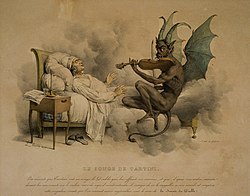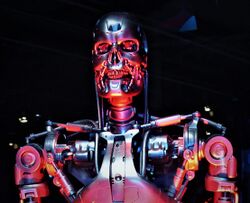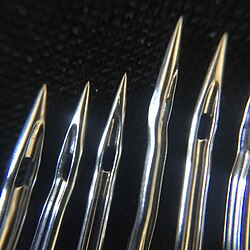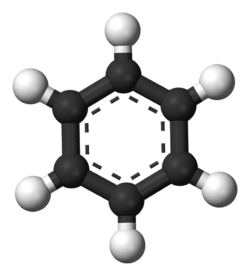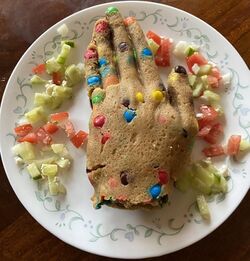Unsolved:Works based on dreams
Dreams have been credited as the inspiration for several creative works and scientific discoveries.
Books and poetry
Kubla Khan
Samuel Taylor Coleridge wrote Kubla Khan (completed in 1797 and published in 1816) upon awakening from an opium-influenced dream. In a preface to the work, he described having the poem come to him, fully formed, in his dream. When he woke, he immediately set to writing it down, but was interrupted by a visitor and could not remember the final lines. For this reason, he kept it unpublished for many years.
Frankenstein
Mary Shelley's Frankenstein (1818) was inspired by a dream:
"When I placed my head upon my pillow, I did not sleep, nor could I be said to think. My imagination, unbidden, possessed and guided me, gifting the successive images that arose in my mind with a vividness far beyond the usual bounds of reverie. I saw the pale student of unhallowed arts kneeling beside the thing he had put together. I saw the hideous phantasm of a man stretched out, and then, on the working of some powerful engine, show signs of life, and stir with an uneasy, half-vital motion. Frightful must it be; for supremely frightful would be the effect of any human endeavor to mock the stupendous Creator of the world."[1]
Strange Case of Dr Jekyll and Mr Hyde
Robert Louis Stevenson dreamed the plot for his famous novel Strange Case of Dr Jekyll and Mr Hyde (1886).[2]
Tintin in Tibet
The Belgian comics artist Hergé was plagued by nightmares in which he was chased by a white skeleton, whereupon the entire environment turned white. A psychiatrist advised him to stop making comics and take a rest, but Hergé drew an entire story set in a white environment: the snowy mountaintops of Tibet. Tintin in Tibet (1960) not only stopped his nightmares and worked as a therapeutic experience, but the work is also regarded as one of his masterpieces.[3]
Twilight
Inspiration for Stephenie Meyer's Twilight (2005) came by a dream:
"It was two people in kind of a little circular meadow with really bright sunlight, and one of them was a beautiful, sparkly boy and one was just a girl who was human and normal, and they were having this conversation. The boy was a vampire, which is so bizarre that I'd be dreaming about vampires, and he was trying to explain to her how much he cared about her and yet at the same time how much he wanted to kill her."[4]
The Miraculous Journey of Edward Tulane
The seeds to the plot of The Miraculous Journey of Edward Tulane (2006) came to Kate DiCamillo in a dream: "One Christmas, I received an elegantly dressed toy rabbit as a gift. A few days later, I dreamed that the rabbit was face down on the ocean floor - lost and waiting to be found."[5]
Music
Devil's Trill Sonata
Giuseppe Tartini recounted that his most famous work, his Violin Sonata in G minor, more commonly known as the Devil's Trill Sonata, came to him in a dream in 1713. According to Tartini's account given to the French astronomer Jérôme Lalande, he dreamed that he had made a pact with the devil, to whom he had handed a violin after a music lesson, in order to assess whether the devil could play. The devil then proceeded to play "with such great art and intelligence, as I had never even conceived in my boldest flights of fantasy".
Tartini said that on waking he "immediately grasped my violin in order to retain, in part at least, the impression of my dream".[6]
"(I Can't Get No) Satisfaction"
Keith Richards claimed to have dreamed the riff to the 1965 song "(I Can't Get No) Satisfaction". He ran through it once before falling asleep. He said when he listened back to it in the morning, there was about two minutes of acoustic guitar before you could hear him drop the pick and "then me snoring for the next forty minutes".[7]
"Yesterday"
Paul McCartney claimed to have dreamed the melody to his song "Yesterday" (1965). After he woke up, he thought it was just a vague memory of some song he heard when he was younger. As it turned out that he had completely thought up this song all by himself, he recorded it and it became the most often covered pop song in the world.[2]
"Let It Be"
Paul McCartney has also claimed that the idea of "Let It Be" came to him after a dream he had about his mother during the tense period surrounding the sessions for The Beatles ("the White Album") in 1968.[8] McCartney later said: "It was great to visit with her again. I felt very blessed to have that dream. So that got me writing 'Let It Be'."[9][10] In a later interview, McCartney said that in the dream his mother had told him, "It will be all right, just let it be."[11]
"The Prophet's Song"
Brian May said that he was inspired to write the 1975 Queen track "The Prophet's Song" after a hepatitis-induced fever dream he had about an apocalyptic flood.[12] It is the longest Queen song with vocals.
Selected Ambient Works Volume II
Richard James, who performs as Aphex Twin, has written several ambient tracks while lucid dreaming, saying that:
Melodies were easy to remember. I'd go to sleep in my studio. I'd go to sleep for ten minutes and write three tracks—only small segments, not 100 percent finished tracks. I'd wake up and I'd only been asleep for ten minutes. That's quite mental. I vary the way I do it, dreaming either I’m in my studio, entirely the way it is, or all kinds of variations. The hardest thing is getting the sounds the same. It's never the same. It doesn't really come close to it.[13]
James says that seventy per cent of his 1994 album Selected Ambient Works Volume II was written while lucid dreaming.[13]
The Dark Carnival
Violent J, a member of Insane Clown Posse, claimed to have dreamed the concept of The Dark Carnival, which is described in much of their discography. The concept was inspired by a dream of Insane Clown Posse member Violent J where spirits in a traveling carnival appeared to him.[14]
Film and television
3 Women
Director Robert Altman conceived of his 1977 film 3 Women during a restless sleep while his wife was in the hospital. He dreamt that he was directing a film starring Shelley Duvall and Sissy Spacek in an identity theft story, against a desert backdrop.[15] He based the film on this dream, although additional story details were added later.
The Terminator
Director James Cameron said the titular character in The Terminator (1984) was inspired by a dream he had under the influence of a soaring fever. It was a vivid dream where a gleaming figure of doom emerged from fire; a metallic, skeletal monster with a rictus smile and burning red eyes, dragging itself across the floor with kitchen knives. He states: "I was sick and dead broke in Rome, Italy, with a fever of 102, doing the final cut of Piranha II. That's when I thought of Terminator. I guess it was a fever dream."[16]
Over the Garden Wall
Chapter 5 of the miniseries Over the Garden Wall (2014), "Mad Love", was inspired by a dream that show creator Patrick McHale had. In the events of the dream, Pat was house hunting and came across a secret library in one of the houses. As he explored further, he realized that he had entered someone else's home. In the episode, the character Quincy Endicott explores his mansion, and discovers that he has entered the mansion of his neighbor.
Video games
Deltarune
In an interview conducted a few months after the release of its first chapter, Toby Fox stated that the idea for Deltarune (2018) came from a dream he experienced while bedridden from a fever seven years prior. According to Fox, the dream depicted the emotionally-moving ending to a game that didn't exist; upon waking up, he was determined to make the game into a reality.[17][18]
Science
Descartes' new science
Descartes claimed that the dreams that he had on November 10, 1619, revealed to him the basis of a new philosophy, the scientific method.[citation needed]
The sewing machine
There is a possibly apocryphal account of Elias Howe inventing the needle of the modern lockstitch sewing machine in a dream. A traditional needle has its eye at its base, but Howe was supposedly inspired by a dream to instead position the eye at the point, as recorded in the history of his mother's family:
[Howe] dreamed he was building a sewing machine for a savage king in a strange country. Just as in his actual working experience, he was perplexed about the needle's eye. He thought the king gave him twenty-four hours in which to complete the machine and make it sew. If not finished in that time death was to be the punishment. Howe worked and worked, and puzzled, and finally gave it up. Then he thought he was taken out to be executed. He noticed that the warriors carried spears that were pierced near the head. Instantly came the solution of the difficulty, and while the inventor was begging for time, he awoke. It was 4 o'clock in the morning. He jumped out of bed, ran to his workshop, and by 9, a needle with an eye at the point had been crudely modeled. After that it was easy.[19]
Benzene
The scientist Friedrich August Kekulé discovered the seemingly impossible chemical structure of benzene (C6H6) when he had a dream of a group of snakes swallowing their tails.[20]
Mendeleev's Periodic Table
Dmitri Mendeleev, who created the periodic table foundational to current understanding of chemistry, claimed to have envisioned the complete arrangement of the elements in a dream. While struggling to correctly orient the elements he recalls seeing them in a dream a table where all elements fell into place as required. Awakening, he immediately wrote them down on a piece of paper. Only in one place did a correction later seem necessary.
Niels Bohr's structure of the atom
Niels Bohr won the Nobel Prize for Physics in 1922 for his discovery of the structure of the atom. He recalled that the electrons revolving around the nucleus, like the solar system, came to him in a dream.[21] Upon testing his "dream" hypothesis, he was able to discover that the atomic structure was, in fact, similar to it.
Srinivasa Ramanujan's divine revelations
Indian mathematician Srinivasa Ramanujan, known for his substantial contributions to number theory, analysis and other areas of pure mathematics, claimed that Hindu goddess Namagiri Thayar would bestow him with mathematical insights in his dreams[22]:36 and that in these visions, "scrolls containing the most complicated mathematics used to unfold before his eyes"[22]:281
Otto Loewi and neurotransmission
Before Otto Loewi's work, there was debate on whether neurotransmission was primarily chemical or electrical. On a night before Easter Sunday, Loewi had dreamed of the perfect experimental setup: two chambers with beating hearts - one with its nerves intact and the other without. These chambers would be filled with solution and connected with a tube. The experimenter would electrically stimulate the first heart, causing it to beat slower. If neurotransmission was primarily electrical, there would be no reason for the second heart to slow down. However, if neurotransmission was chemical, then the chemicals could theoretically float down the tube and slow down the second heart in the other chamber as well.
Loewi wrote this idea down but could not decipher his own writing when he awoke in the morning. The next night, the dream came to him again. Working with Henry Dale, Loewi would go on to use this experimental setup to demonstrate chemical neurotransmission and win the Nobel Prize for it in 1936.[23]
Food
King's Hand
King's Hand is a dessert made of M&M's and cookie dough, molded into the shape of a hollow hand and baked, before being filled with Greek salad. It was invented by a 28-year-old data analyst, who says the idea for the dish came to her in a dream in which it was the main course of a festival feast.[24] After a week of experimentation, she posted a series of photos on Twitter on December 6, 2020. Later that day, she shared her recipe. As of December 15, 2020, the tweet had garnered over 166,000 likes and was featured in a diverse array of media and print publications, including Fox News,[25] TODAY,[26] and BuzzFeed News.[24] The original post inspired people to make their own versions, as well as descriptions of foods that had appeared in others' dreams.[27]
See also
- Tetris effect
References
- ↑ Mary Wollstonecraft Shelley, from her introduction to Frankenstein
- ↑ 2.0 2.1 "Twelve Famous Dreams: Creativity and Famous Discoveries From Dreams". http://www.brilliantdreams.com/product/famous-dreams.htm.
- ↑ Goddin, Philippe (2011). The Art of Hergé, Inventor of Tintin: Volume 3: 1950–1983. Michael Farr (translator). San Francisco: Last Gasp. p. 108. ISBN 978-0-86719-763-1.
- ↑ ""Twilight" author: It started with a dream". CNN (Cable News Network). November 18, 2009. http://edition.cnn.com/2009/LIVING/worklife/11/18/o.twilight.newmoon.meyer/.
- ↑ DiCamillo, Kate (2006). The miraculous journey of Edward Tulane. Bagram Ibatoulline (1st ed.). Cambridge, Mass.: Candlewick Press. ISBN 0-7636-2589-2. OCLC 56413423. https://www.worldcat.org/oclc/56413423.
- ↑ Holmen, Peter. "Sonata in G minor 'Il trillo del Diavolo', Bg5". http://www.hyperion-records.co.uk/dw.asp?dc=W9581_202922.
- ↑ Keith Richards – In His Own Words by Mick St Michael, Omnibus Press, 1994, p. 24. ISBN:0-7119-3634-X
- ↑ Miles 1997, p. 20.
- ↑ Spitz 2005, pp. 88–90.
- ↑ The Beatles 2000, p. 19.
- ↑ Sold on Song 2009.
- ↑ Beard, Red (2020-11-09). "Queen- A Night at the Opera- Brian May, Roger Taylor" (in en-US). https://www.inthestudio.net/online-on-demand/queen-night-opera-brian-may-roger-taylor/.
- ↑ 13.0 13.1 Weidenbaum, Marc (13 February 2014) (in en). Aphex Twin's Selected Ambient Works Volume II. Bloomsbury Publishing USA. ISBN 978-1-62356-343-1. https://books.google.com/books?id=VHSnAgAAQBAJ.
- ↑ Bruce, Joseph; Hobey Echlin (2003). "The Dark Carnival". in Nathan Fostey. ICP: Behind the Paint (second ed.). Royal Oak, Michigan: Psychopathic Records. pp. 174–185. ISBN 0-9741846-0-8. https://archive.org/details/icpbehindpaint00viol.
- ↑ Sterritt, David (2004). "3 Women: Dream Project". The Criterion Collection. https://www.criterion.com/current/posts/319-3-women-dream-project.
- ↑ "James Cameron – How to direct a 'Terminator'". Terminatorfiles.com. 2012-04-24. http://www.terminatorfiles.com/media/articles/cameron_001.htm. Retrieved 2014-08-25.
- ↑ Soejima (February 14, 2019). "『DELTARUNE Chapter 1』が2/28に配信決定" (in ja). Nintendo. https://topics.nintendo.co.jp/c/article/0e438e10-2b35-11e9-b104-0a6d14145cb1.html.
- ↑ Lim, Gabriel (18 February 2019). "Toby Fox Speaks About Deltarune's Development, Shares New Concept Art". https://nintendosoup.com/toby-fox-speaks-about-deltarunes-development-shares-new-concept-art/. "In 2011, when I was away at school, I got very sick. I ended up having a terrible fever and couldn’t get any medicine for it, and while I was sleeping I had a vivid dream about the ending to a game. Since then… I felt like I had to make the game with that ending."
- ↑ Waln-Morgan Draper, Thomas, The Bemis History and Genealogy: Being an Account, in Greater Part, of the Descendants of Joseph Bemis of Watertown, Massachusetts, The Bemis History and Genealogy (Washington [District of Columbia]: Library of Congress, [19--]), pp 159–162, 1357 Joshua Bemis, FHL Microfilm 1011936 Item 2.
- ↑ F.A. Kekulé (1890). "Benzolfest: Rede". Berichte der Deutschen Chemischen Gesellschaft 23: 1302–1311. doi:10.1002/cber.189002301204. http://gallica.bnf.fr/ark:/12148/bpt6k90720c/f1304.chemindefer.
- ↑ "Bohr, Niels". https://allaboutheaven.org/sources/bohr-niels/190.
- ↑ 22.0 22.1 Kanigel, Robert (1991). The Man Who Knew Infinity: a Life of the Genius Ramanujan. New York: Charles Scribner's Sons. ISBN 978-0-684-19259-8.
- ↑ Borges, Ricardo; García, Antonio G. (2021-06-01). "One hundred years from Otto Loewi experiment, a dream that revolutionized our view of neurotransmission" (in en). Pflügers Archiv: European Journal of Physiology 473 (6): 977–981. doi:10.1007/s00424-021-02580-9. ISSN 1432-2013. PMID 34046754. https://doi.org/10.1007/s00424-021-02580-9.
- ↑ 24.0 24.1 Onibada, Ade (2020-12-10). "This Man Had A Dream About A Completely Random Meal Called "King's Hand," So He Brought It To Life" (in en). https://www.buzzfeednews.com/article/adeonibada/man-dream-kings-hand-snack.
- ↑ Deabler, Alexandra (2020-12-07). "Man makes cookie, salad 'King's Hand' dish based on dream he had, goes viral" (in en-US). https://www.foxnews.com/food-drink/man-dream-kings-hand-cookie-salad-viral.
- ↑ Kubota, Samantha (2020-12-07). "Man goes viral for baking hand-shaped cookie stuffed with salad that he saw in dream" (in en). NBC Universal. https://www.today.com/food/man-goes-viral-baking-hand-shaped-cookie-stuffed-greek-salad-t202998.
- ↑ Morillo, Alexis (2020-12-07). "This Twitter User Made A Greek Salad-Stuffed Cookie They Saw In A Dream And Of Course It Went Viral" (in en-US). https://www.delish.com/food-news/a34895763/viral-tweet-kings-hand-salad-cookie/.
External links
